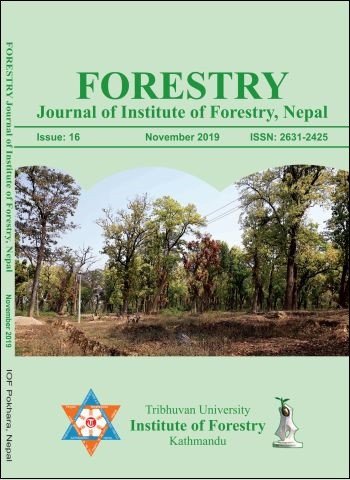Perceived Climate Change Impacts and Adaptation Strategy of Indigenous Community (Chepangs) in Rural Mid-hills of Nepal
DOI:
https://doi.org/10.3126/forestry.v16i0.28353Keywords:
Climatic variability, peoples' perceptions, attitudes to adaptions, adapted coping mechanisms, indigenous peopleAbstract
Climate change is projected to increase in vulnerable areas of the world, and marginalized communities residing in rural areas are more vulnerable to the change. The perceptions of climate change and adaptation strategies made by such communities are important considerations in the design of adaptation strategies by policy-makers. We examined the most marginalized indigenous group "Chepang" communities' perceptions towards this change, variability, and their attitudes to adaptations and adapted coping measures in mid-hills of Nepal. We interviewed 155 individuals from two Chepang communities, namely, Shaktikhor and Siddhi in Chitwan district of Nepal. We also analyzed biophysical data to assess the variability. The findings showed that the Chepang community has experienced significant impacts of climate change and variability. They attributed crop disease, insect infestation, human health problem, and weather-related disaster as the impacts of climate change. Strategies they have adopted in response to the change are the use of intense fertilizers in farmland, hybrid seeds cultivation, crop diversification, etc. Local level and national level adaptation policies need to be designed and implemented as soon as possible to help climate vulnerable communities like Chepangs to cope against the impacts of climate change.
Downloads
Downloads
Published
How to Cite
Issue
Section
License
© Tribhuvan University, Institute of Forestry




